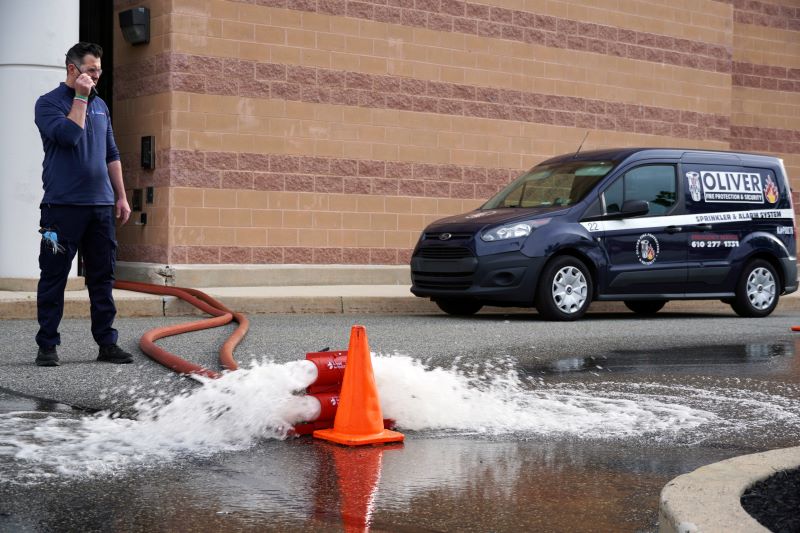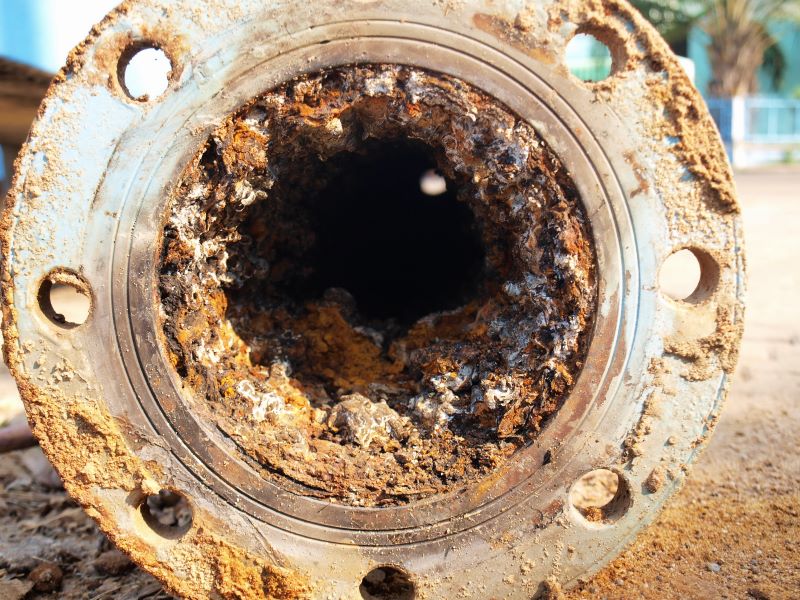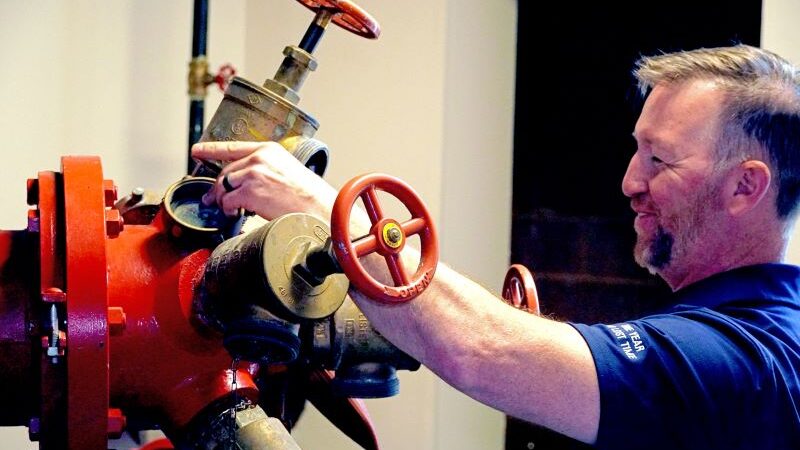by Lars Mascera
Keeping your fire sprinkler system in top condition isn’t just good practice, it’s a requirement. A fifth-year inspection is a comprehensive internal check of your fire sprinkler system(s), as referenced in NFPA 25. It occurs every five years to ensure your sprinkler system is functioning properly and in-line with required fire safety regulations. While not all jurisdictions require fifth-year inspections, you will need to check with your local AHJ (Authority Having Jurisdiction) to see what local regulations apply where your business is located.
Philadelphia, for example, requires fifth-year sprinkler inspections to be completed by the end of each year ending in “0” or “5.” For instance, you’ll need fifth-year inspections performed in 2020, 2025, 2030, 2035, and so on.
In the year when your fifth-year inspection is due, it’s best to complete these inspections during the warmer spring or summer months, as water may need to be flowed onto streets and/or rooftops during testing. Plan ahead! Schedule your inspections and testing during these warmer months to stay safe, stay in compliance, and ensure your fire protection system is up to standard before the end of the year.

Why is a 5th-Year Inspection Essential?
Here’s a breakdown of what happens during a fifth-year inspection:
- Internal Piping Check: We test the flow of water at four points of a system: valve, riser, cross main, and branch line. We inspect the internal pipes for obstructions, Microbiologically Influenced Corrosion (MIC), and debris that could affect performance. In buildings with multiple wet pipe systems, every other system will be tested every five years.
- Component Assessment: We thoroughly examine valves, gauges, and other critical components.
- Hydrostatic Testing: We test the standpipe and fire department connections to verify their integrity and readiness.
- Standpipe Flow Test: Automatic standpipe systems will be flow tested to verify that the required flow and pressure are available at the hydraulically most remote hose valve outlet(s).
Why It Matters
These inspections are crucial for several reasons:
- Ensures Reliability: Regular inspections confirm your system is ready to perform in an emergency.
- Regulation Compliance: Adhering to NFPA 25 standards helps you meet fire safety laws.
- Prevents Blockages: Identifies potential blockages before they cause problems.
- Extends Lifespan: Regular maintenance helps your system last longer.
- Reduces Water Damage Risk: Spots issues that could lead to leaks or damage.
- Improves Performance: Ensures your system operates efficiently.

Common Issues Detected
During these inspections, we often find issues such as:
- Blockages or debris in the piping
- Corrosion affecting system components
- Malfunctioning valves or gauges
If foreign material, extensive build-up, or indications of severe pitting or corrosion are observed, a more thorough investigation may be required.
Consequences of Skipping the Inspection
Skipping your inspection can result in fines and, more importantly, leave your system unprepared in an emergency. It’s essential to stay on top of these inspections to avoid these risks and ensure your system’s effectiveness.
Maintenance Tips
To keep your system in good shape between inspections:
- Regularly check for leaks or damage
- Ensure there are no obstructions
- Follow any recommended maintenance tasks
Keeping up with your inspections and maintaining your system ensures your fire protection is always at its best. Need to schedule your inspection or speak with one of our professionals in more depth about these fifth-year inspections? Contact Oliver Fire Protection & Security for more information.

